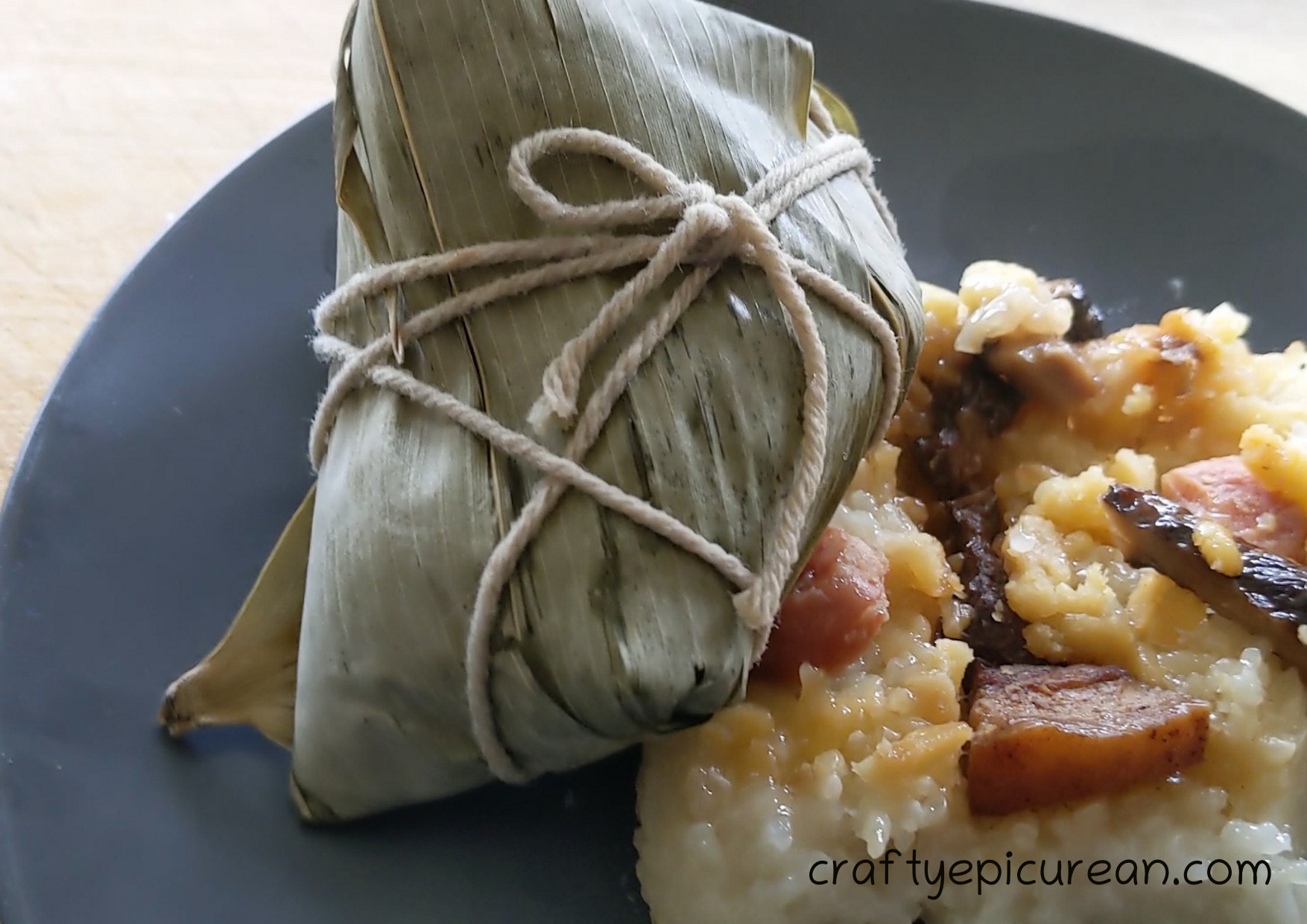Ingredients:
40+ Bamboo leaves
1 kg glutinous rice
4 tbsp light soy sauce
2 tsp sesame oil
1/2 tsp salt
6 chinese sausages
6 chinese mushrooms
100g peeled mung beans
50g dried shrimp
Pork and Marinade
500g belly pork
1/2 tsp five spice powder
1 clove garlic, crushed
2 tbsp dark soy sauce
1/2 tsp sesame oil
Method:
Soak the bamboo leaves, rice, mushrooms and mung beans overnight.
Cut the pork into strips, then marinade overnight in five spice powder, garlic, dark soy sauce and seasme oil.
Drain the rice, mung beans and bamboo leaves.
Cut the mushrooms and sausages into small bite sized pieces.
Add light soy sauce, sesame oil and salt to the rice; stir until coated all over.
To make Joong, take two bamboo leaves, (you might need to use a damp cloth to iron out any creases in the leaves) lay one on top of the other length ways.
Bend them upwards to make a pocket.
Spoon a bit of rice into the pocket, add some mung beans, and couple of pieces of mushrooms, pork, sausage.
Sprinkle some dried shrimp on top then fill the pocket with more rice.
Fold down the leaves to cover the filling and continue bending the leaves around to make a packet.
Use twine or string to tie off and secure the bamboo leaves around the filling, making sure to tightly tie off the end whilst leaving a loose end of string to make it easy to untie and eat.
Place in a large pot.
Repeat with remaining leaves and ingredients.
Once all the joong are made and in the pot, fill with cold water, making sure all the joong are submerged.
Bring to a rapid simmer.
Simmer for 1 hour.
And they are ready to eat.
To eat, untie the string/twine, remove the bamboo leaves and serve with light soy sauce.
Enjoy!!
Mel Crafting
